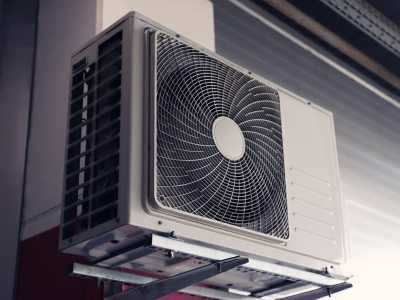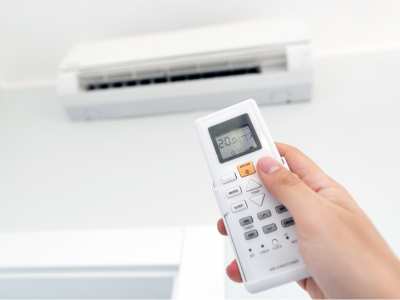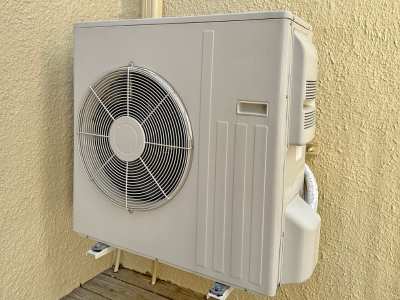Are you considering installing a ductless mini-split in your home? This type of heating and cooling system has been gaining popularity in recent years, but is it the right choice for your home?
In this article, we'll explore the pros and cons of installing a ductless mini-split so you can make an informed decision.
What is a Ductless Mini-Split?
A ductless mini-split is a type of heating and cooling system that does not require ductwork. It consists of an outdoor unit and one or more indoor units, connected by a conduit that houses the power cable, refrigerant tubing, suction tubing, and a condensate drain. The indoor units are typically mounted on the wall or ceiling and can be controlled individually, allowing for zoned heating and cooling.

Pros of Installing a Ductless Mini-Split
Improved Home Comfort
One of the biggest advantages of a ductless mini-split is improved home comfort. With traditional HVAC systems, the temperature is controlled by a single thermostat, which can result in uneven heating and cooling throughout the home. With a ductless mini-split, each indoor unit has its own thermostat, allowing for precise temperature control in each room. This means no more fighting over the thermostat and everyone can be comfortable in their own space.
Energy Efficiency
Ductless mini-splits are known for their energy efficiency. Traditional HVAC systems can lose up to 30% of their energy through ductwork, but since ductless mini-splits do not require ducts, there is no energy loss. Additionally, the ability to control each indoor unit individually means you can turn off units in rooms that are not in use, saving even more energy.
Easy Installation
Installing a ductless mini-split is much easier and less invasive than installing a traditional HVAC system. There is no need for ductwork, which can be costly and time-consuming to install. The outdoor unit can be placed up to 50 feet away from the indoor unit, giving you more flexibility in where you want to install it. This also means you don't have to sacrifice closet or storage space for a bulky HVAC unit.
Cost Savings
While the initial cost of a ductless mini-split may be higher than a traditional HVAC system, the long-term cost savings can make it a more affordable option. With energy efficiency and the ability to control each unit individually, you can save on your monthly energy bills. Additionally, the easy installation means you won't have to spend as much on labor costs.

Cons of Installing a Ductless Mini-Split
Upfront Cost
As mentioned, the initial cost of a ductless mini-split can be higher than a traditional HVAC system. This is due to the cost of the units themselves and the installation process. However, as mentioned, the long-term cost savings can make up for this initial investment.
Limited Heating and Cooling Capacity
Ductless mini-splits are not suitable for larger homes or spaces that require a lot of heating and cooling. They are best suited for smaller spaces or as a supplement to a traditional HVAC system. If you have a large home or live in an area with extreme temperatures, a ductless mini-split may not be able to provide enough heating and cooling to keep your home comfortable.
Aesthetics
While some people may find the sleek design of a ductless mini-split appealing, others may not like the look of the indoor units mounted on their walls or ceilings. This can be a concern for those who value the aesthetics of their home. However, there are options for recessed or concealed units that can blend in with your home's decor.
Maintenance and Repairs
Like any heating and cooling system, a ductless mini-split will require regular maintenance and may need repairs from time to time. While the maintenance is relatively simple, it is important to keep up with it to ensure your system is running efficiently. Repairs can also be costly, especially if you need to replace a unit or the outdoor compressor.

Is a Ductless Mini-Split Right for Your Home?
Now that we've explored the pros and cons of installing a ductless mini-split, you may be wondering if it's the right choice for your home. Here are a few factors to consider:
Your Home's Size and Layout
As mentioned, ductless mini-splits are best suited for smaller spaces. If you have a larger home or a layout that requires a lot of heating and cooling, a traditional HVAC system may be a better option for home comfort.
Your Climate
If you live in an area with extreme temperatures, a ductless mini-split may not be able to provide enough heating and cooling to keep your home comfortable. It's important to consider your climate when deciding on a heating and cooling system.
Your Budget
While the long-term cost savings of a ductless mini-split can make it a more affordable option, the initial cost may be a concern for some homeowners. It's important to consider your budget and weigh the upfront cost against the potential savings in the long run.
Conclusion
In conclusion, a ductless mini-split can be a great option for improving home comfort and energy efficiency. However, it may not be the right choice for every home. Consider your home's size, layout, climate, and budget when deciding if a ductless mini-split is the best option for you. With proper maintenance and repairs, a ductless mini-split can provide reliable heating and cooling for years to come.
Engle Services offers ductless mini-split installation and repair in Sylacauga, Talladega, Birmingham, Shelby County (Hoover, Chelsea), Alabaster, Pell City, Dadeville, Wetumpka, Montgomery, Fort Walton Beach (Florida) and all their surrounding areas.
Ready to schedule with our team of HVAC Technicians, Electricians, and Plumbers?
Schedule an appointment online or give us a call at (855) GET-ENGLE
